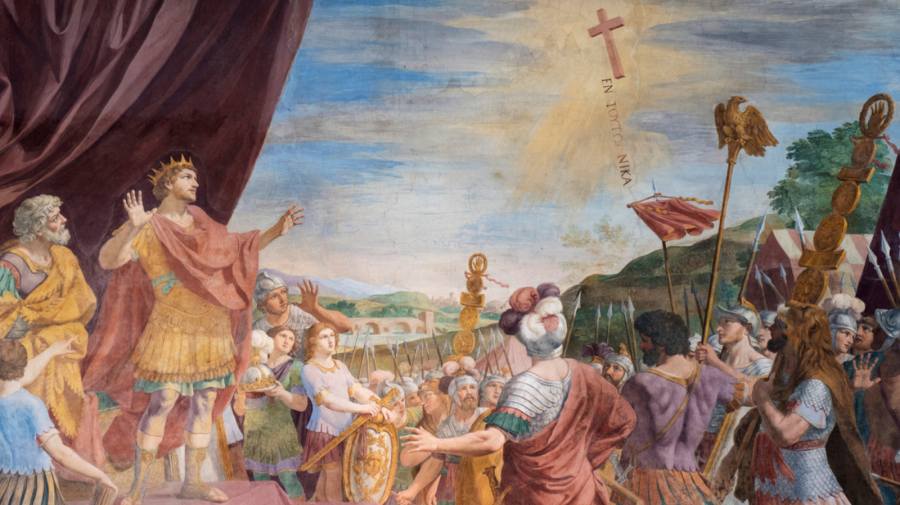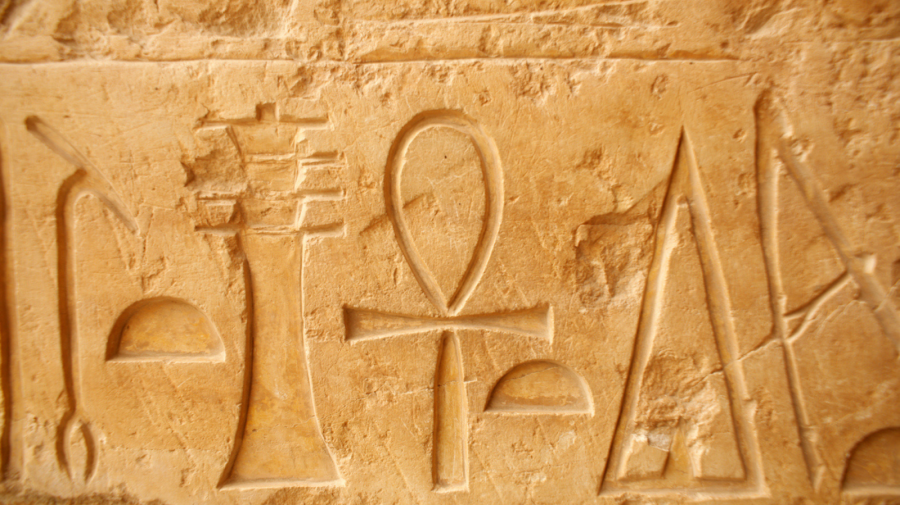The History and Symbolism of the Christian Cross

Today the cross is a universally acknowledged symbol of Christianity. For Christians worldwide, the cross is a symbol of Jesus Christ’s execution and subsequent resurrection three days later.
But where did the Christian cross originate, and when did it become so widely used? Join us for a fascinating look into early church history and how the cross emerged as a central symbol of the Christian religion.
The History of the Christian Symbolism

While the Christian cross is ubiquitously recognized today, it wasn’t always so widely or openly used. This was partly due to the fact that the Roman empire outlawed Christianity, and participation in the religion was punishable by death during the early second century.
During that time, a number of other symbols, some of which held secret meanings, were more commonly used by early Christians. The fish, which still lives on today as the “Jesus fish,” served as a way for early Christians to recognize one another.
When a Christian met with someone they suspected might be a fellow believer, they would casually draw an arc in the dirt. If the stranger was indeed a fellow Christian, they would add another arc in a way that made both lines resemble a fish.
The second-century Christian teacher Clement of Alexandria wrote,
“Let our emblem be a dove, or a fish, or a ship running before the wind, or a musician’s lyre, or a ship’s anchor. And if there be a fisherman, he will remind us of an apostle, and little children being drawn up out of the water.”
Many of these symbols harked back to stories from the life of Jesus of Nazareth. The fish appears in the miracle in which he fed 5,000 people with two fish and five loaves of bread. he also commanded his followers to be “fishers of men.”
But how do symbols like the ship and anchor fit in? This may go back to an idea held by some early Christians, such as Justin Martyr, who believed that the shape of the cross was hidden in everyday objects such as anchors and ship masts.
While Christians used the cross as a talisman to ward off evil as early as the 2nd century, its use in public was still incredibly dangerous. It wasn’t until the 4th century AD that the Chrisitan cross was able to enjoy much wider use.
Timeline of the Cross’ Spread

- 312 AD:
The conversion of the Roman Emperor Constantine in 312 AD was a game-changer for the early Christian church. As the first Christian emperor of Rome, Constantine legalized Christianity through the Edict of Milan, ending the religious persecution that early Christians had endured for centuries.
After his dramatic conversion, Constantine became fascinated by the history of Christianity and authorized excavations of Jerusalem, aka the Holy Land.
- 325 AD:
Legends eventually arose that the emperor’s mother, Helena, discovered pieces of the “True Cross” that Christ was crucified on in Jeruselum sometime around 325 AD. Helena’s discovery of the cross was even given its own feast day called the “Invention of the Cross.”
Constantine also built an opulent church called the Martyrium on what was believed to be the site of Jesus’ crucifixion and resurrection. The church’s dedication was also celebrated with its own feast day called the “Exaltation of the Cross,” which is still celebrated among many Christians to this day.
- 4th and 5th Centuries AD:
As Christianity spread throughout the Roman empire, so too did the use of the cross in its churches. Among the more common crosses of this time was the “Crux Gemmata,” a cross jeweled with 13 precious stones representing Christ and his 12 apostles.
- Middle-Ages:
Depictions of the crucifixion in art began to become more common. The ritual of venerating the Christian cross on Good Friday began to spread outside the Holy Land.
During the High Middle Ages, the symbol of the cross was widely used during the Crusades by warriors who “took the cross” as an oath in their crusade for the Holy Land.
- Renaissance:
The explosion in art during the Renaissance was not lost on the Catholic church, which commissioned countless works that doubtless led to the further spread of Christian symbolism.
While the crucifix, which depicts Jesus on the cross, is still widely used in Catholicism today, the empty cross became the preferred symbol of protestants after the Reformation of the early 16th century.
The Cross’ Symbolism in Other Religions

The cross has been used as a symbol by various cultures throughout history. It has symbolized a variety of different ideas, some of which pre-date the birth of Christianity.
The Celtic Cross, for instance, is widely believed to have first been used by ancient Celts in the worship of sun deities. The intersecting lines of the cross may have been used to symbolize the intersection of heaven and earth, the four cardinal directions, four elements, and/or the unification of the mind, body, heart, and soul.
The Egyptian Ankh, believed by some to be the original cross, was used in ancient Egypt and is commonly depicted in the temples of gods such as Osiris, Isis, and Ra. It’s still widely used today to symbolize the idea of eternal life.
More recently, the cross has even been integrated into newer religions such as Scientology. Founder L. Ron Hubbard added a diagonal four-point star to the traditional cross to symbolize “the eight parts, or dynamics, of life through which each individual is striving to survive.”
The Gnostic belief system, which incorporates Christian, Kabbalaic, alchemic, and pagan beliefs, also has its own Gnostic cross, reflecting its unique blend of beliefs.
Even within Christianity itself, a vast array of different crosses have come to be utilized, each of which holds its own distinct meaning.
Hopefully, you’ve enjoyed learning more about the history of the cross and how it came to be a universal symbol of Christianity over the years.





